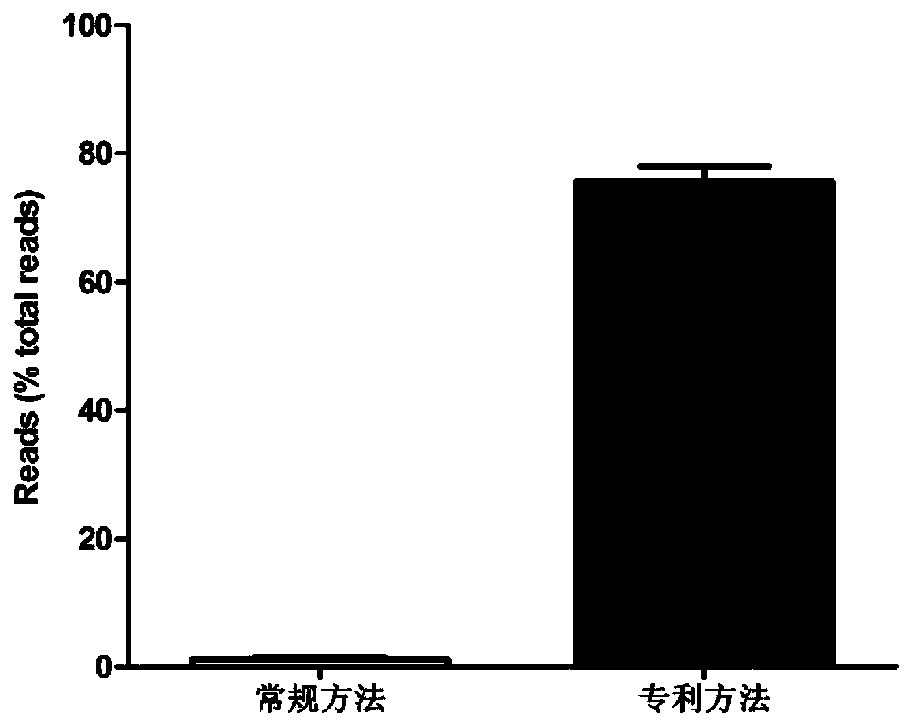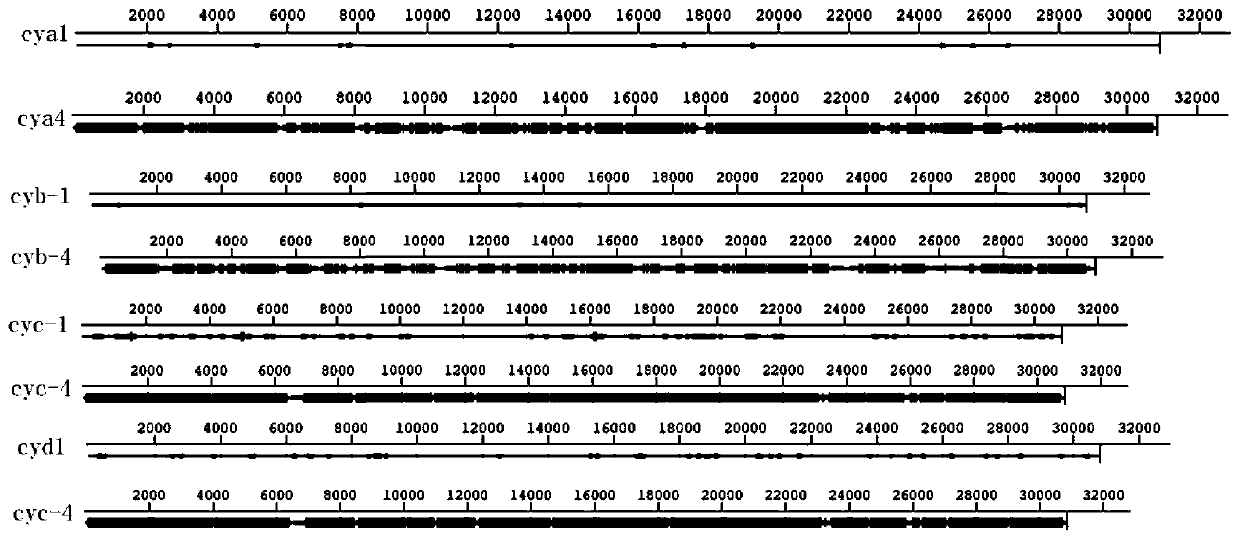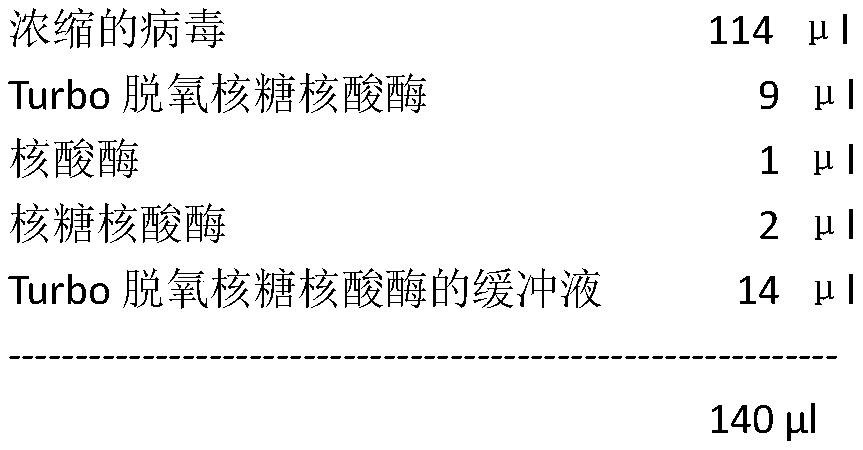Detection method for respiratory tract viruses
A detection method and respiratory technology, applied in the biological field, can solve the problems of high requirements for instruments and operating techniques, increased detection costs, time consumption and server space
- Summary
- Abstract
- Description
- Claims
- Application Information
AI Technical Summary
Problems solved by technology
Method used
Image
Examples
Embodiment 1
[0112] We take the virus detection of the respiratory samples of 4 cases of human lung diseases collected in June 2018 as an example to illustrate the specific embodiments of the present invention in sequence.
[0113] 1. Sample collection and storage conditions:
[0114] 1. First, take throat samples from inpatients diagnosed as COPD patients (cya), allergic patients (cyb), pulmonary hemorrhage patients (cyc) and lung cancer patients (cyd) and quickly store them in virus collection tubes (about 3ml) , oscillate for 30s. Other trace samples can also be stored in virus collection tubes. For the convenience of comparison, each sample is processed by two methods, and processed according to the method of the present invention. The samples are named cya1, cyb1, cyc1 and cyd1, and the samples processed by modern methods are named as cya2cyb2, cyc2 and cyd2 directly extract nucleic acid without going through the enrichment process of the method.
[0115] 2. The amount of sampling c...
PUM
 Login to View More
Login to View More Abstract
Description
Claims
Application Information
 Login to View More
Login to View More - R&D
- Intellectual Property
- Life Sciences
- Materials
- Tech Scout
- Unparalleled Data Quality
- Higher Quality Content
- 60% Fewer Hallucinations
Browse by: Latest US Patents, China's latest patents, Technical Efficacy Thesaurus, Application Domain, Technology Topic, Popular Technical Reports.
© 2025 PatSnap. All rights reserved.Legal|Privacy policy|Modern Slavery Act Transparency Statement|Sitemap|About US| Contact US: help@patsnap.com



